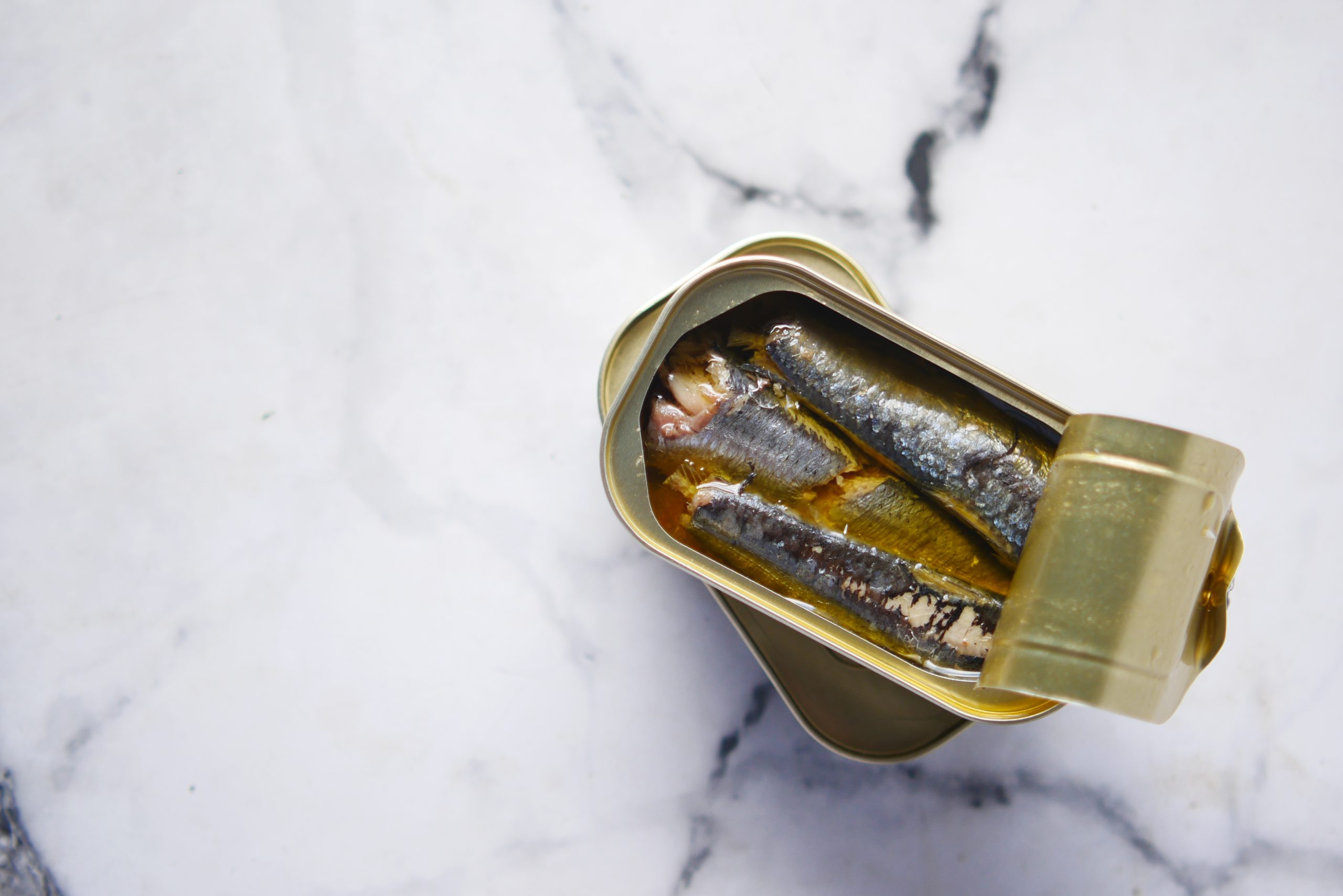You know what they say: “Don’t judge a tin fish by its bones.” But is it really necessary to remove those tiny skeletal fragments before indulging in your favorite canned seafood? Well, prepare to have your taste buds tantalized and your curiosity piqued as we uncover the truth behind this age-old culinary conundrum. We’ll explore the benefits, potential drawbacks, and alternative ways to savor the goodness of tin fish, leaving you with a decision that might just change the way you enjoy this pantry staple. So, are you ready to dive into the depths of this fishy debate?
Opening the Can and Draining the Liquid
To begin the process of removing bones from canned fish, open the can and use the lid to hold the fish in place while you drain the liquid over a sink or bowl. Properly draining the liquid from canned salmon is important in order to remove any excess liquid and prepare the fish for consumption. The liquid from canned salmon has its own benefits and can be consumed separately. It is rich in nutrients such as omega-3 fatty acids, which are beneficial for heart health. Additionally, the liquid can be used in various creative ways, such as adding it to soups or sauces for an added flavor boost. After draining the liquid, it is important to store it properly. Transfer the liquid to an airtight container and refrigerate it for up to three days. This will help preserve its freshness and prevent any contamination. By following these steps, you can ensure that you properly open the can, drain the liquid, and make the most of the benefits and creative uses of the liquid from canned salmon.
Removing the Bones
Removing the bones from canned fish can be accomplished by carefully prying apart the center of the fish where the cartilage or spine is located and using tweezers or your fingers to gently remove the large and small bones. The bone softening process occurs during the canning process, where high temperatures make the bones extremely soft and edible. Additionally, vinegar included in the canning recipe can further soften the bones. Techniques for bone removal include crushing the softened pin bones with your fingers while breaking down the fish into smaller parts, using a food processor or blender to make salmon patties, and using tweezers to effectively remove pin bones and larger bones. It is important to note that removing the bones from canned salmon is a personal preference. Many canned brands can be eaten straight out of the can without removing the bones. However, if you prefer boneless fish, it is recommended to carefully remove all bones before consuming. Canned salmon with bones can be used in various recipes, such as salmon patties, salads, sandwiches, pasta dishes, or as a topping for crackers or toast. Incorporating canned salmon with bones into your meals can increase calcium intake and provide a nutritious and delicious option.
Removing the Skin
After successfully removing the bones from canned fish, the next step is to address the task of removing the skin. While some individuals prefer to discard the skin, there are actually several benefits to keeping it:
- Health benefits of consuming the skin: The skin of canned fish contains a high concentration of omega-3 fatty acids, which are known for their anti-inflammatory properties and their positive effects on heart health. By consuming the skin, you can maximize your intake of these beneficial nutrients.
- Different recipes using the skin: The skin of canned fish can be utilized in various recipes to add flavor and texture. It can be pan-fried until crispy and used as a topping for salads or soups. Alternatively, it can be mashed and mixed with other ingredients to create flavorful fish cakes or patties.
- Alternative uses for the skin: If you prefer not to consume the skin, there are still alternative uses for it. The skin can be used as bait for fishing or as a natural fertilizer for plants due to its high nutrient content.
Debunking the myth that the skin is undesirable or unhealthy, it is clear that keeping the skin of canned fish can provide both culinary and health benefits. So, before discarding the skin, consider incorporating it into your meals or exploring alternative uses for this often overlooked part of canned fish.
Flaking the Salmon
Now that you have removed the bones and skin from the canned salmon, it’s time to flake the fish. Flaking the salmon involves breaking it into smaller, thin pieces, which can be easily incorporated into various recipes or enjoyed on its own. There are different flaking techniques you can use, such as using a fork to gently separate the fish into flakes or using your hands to break it apart. Experiment with different techniques to find the one that works best for you.
Flaked salmon is not only delicious but also offers numerous health benefits. It is a great source of protein, which is essential for muscle growth and repair. Additionally, flaked salmon contains omega-3 fatty acids, which are beneficial for heart health and can help reduce inflammation in the body. It is also rich in vitamins and minerals, including vitamin D, calcium, and iron.
Aside from being used in traditional salmon recipes like salads, sandwiches, and patties, flaked salmon can be used in a variety of other dishes. It can be added to pasta dishes, used as a topping for crackers or toast, or even incorporated into casseroles for added flavor and nutrients.
When storing flaked salmon, it is important to keep it refrigerated in an airtight container to maintain its freshness. It is best to consume it within a few days to ensure optimal taste and quality. You can also freeze flaked salmon for longer storage, but be sure to thaw it properly before using.
Tips and Warnings
To ensure a successful and safe process of removing bones from canned salmon, it is important to keep in mind a few tips and warnings:
- Proper technique for removing bones: When removing bones from canned salmon, it is best to use tweezers or your fingers to gently remove the large and small bones. Avoid squeezing the bones too hard to prevent breakage. Separating the salmon into smaller pieces can help locate and remove concealed bones.
- Risks of consuming bones: While bones in canned salmon are often edible and provide essential nutrients like calcium, there are risks associated with consuming them. The bones can pose a choking hazard, especially for young children or individuals with difficulty swallowing. It is important to exercise caution and ensure the bones are thoroughly removed before consuming.
- Benefits of eating bones and importance of calcium in the diet: Bones in canned salmon are a good source of calcium, which is essential for bone health. Incorporating canned salmon with bones into recipes can increase calcium intake. Calcium is important for maintaining strong bones and teeth, as well as supporting proper muscle function and blood clotting.
Nutritional Benefits and Safety
As we discuss the nutritional benefits and safety of consuming bones in canned salmon, it is important to consider the essential nutrients they provide and the precautions to take to ensure a safe and enjoyable dining experience. Canned salmon with bones offers several advantages in terms of bone health, digestibility, nutrient profile, safety concerns, and convenience.
Firstly, consuming calcium-rich canned salmon with bones can contribute to maintaining strong and healthy bones. The bones in canned salmon are a natural source of calcium, which is essential for bone health. Just half a cup of canned salmon contains approximately 290mg of calcium. This can be particularly beneficial for individuals who may have difficulty meeting their daily calcium requirements through other dietary sources.
Secondly, the bones in canned salmon are softened during the canning process, making them easy to digest. The high temperatures used in canning, along with the inclusion of vinegar in the recipe, further soften the bones, making them safe to consume. The bones in canned salmon crumble easily and can be crushed with fingers or while breaking down the fish into smaller parts, ensuring a comfortable eating experience.
In terms of nutrient profile, canned salmon with bones is a rich source of protein, vitamin A, vitamin D, zinc, and iron. Protein is important for muscle growth and repair, while vitamin A is beneficial for eye health. Vitamin D aids in calcium absorption and bone health, while zinc and iron are essential for overall health.
However, it is important to address safety concerns when consuming canned salmon with bones. While the canning process kills off bacteria, it is still crucial to handle and store canned salmon properly to prevent any potential risks. It is recommended to follow the instructions on the can for proper storage and to consume the salmon within the recommended time frame.
Lastly, the convenience factor of using canned salmon with bones compared to deboning fresh salmon cannot be overlooked. Canned salmon eliminates the time-consuming process of deboning and is readily available for use in various recipes. This can save time in meal preparation and allow individuals to enjoy the nutritional benefits of salmon without the hassle of deboning.
Other Ways to Enjoy Canned Salmon With Bones
To fully experience the nutritional benefits and unique flavors of canned salmon with bones, there are various creative and delicious ways to incorporate it into your meals.
- Creative recipes: Canned salmon with bones can be used to create a variety of tasty dishes. Try making salmon burgers or patties by combining flaked salmon with breadcrumbs, herbs, and spices. You can also use it as a filling for sandwiches or add it to salads for an extra boost of protein and omega-3 fatty acids.
- Health benefits: Canned salmon with bones is a great source of calcium, which is essential for strong bones and teeth. It also provides high-quality protein, vitamin D, and omega-3 fatty acids, which have been linked to numerous health benefits, including reducing inflammation and improving heart health.
- Texture and taste: Keeping the bones in canned salmon can add a unique texture and flavor to your dishes. The softened bones become almost imperceptible when cooked or mixed with other ingredients, providing a pleasant crunch and enhancing the overall taste.
Incorporating canned salmon with bones into your meals not only offers a convenient and cost-effective alternative to fresh salmon fillets but also provides a nutritious and delicious meal option. To ensure the quality and freshness of your canned salmon, store it in a cool, dry place and consume it before the expiration date. Enjoy the benefits and versatility of canned salmon with bones in your culinary creations.


